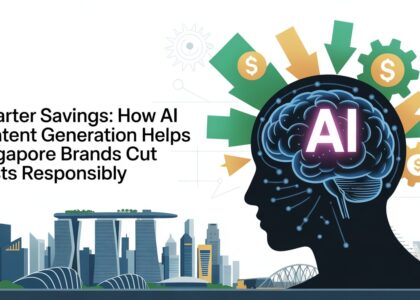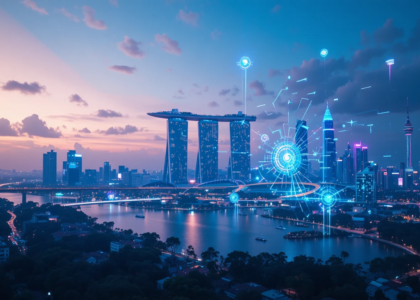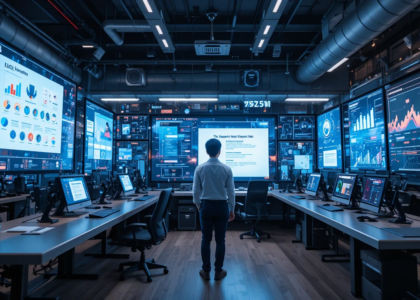The Rise of AI in Asia’s Digital Landscape
Asia is rewriting the global narrative of digital innovation. From Singapore to Seoul, businesses are embracing technologies that redefine how they communicate, market, and grow. At the center of this transformation lies AI Content Generation — a revolutionary approach that’s reshaping the way brands create and distribute content across borders.
The digital economy across Asia is exploding. With billions of active internet users and a diverse linguistic landscape, the demand for scalable, localized, and culturally relevant content has never been higher. Traditional content production can’t keep up with this pace, but AI Content Generation offers the speed and precision that modern businesses need.
Across industries—from retail to fintech—Asian enterprises are leveraging artificial intelligence to streamline content workflows, enhance customer engagement, and achieve global competitiveness. The rise of AI doesn’t just symbolize progress; it represents a bold step toward a future where creativity meets computation.

Understanding AI Content Generation Services
At its core, AI Content Generation refers to the use of artificial intelligence, natural language processing, and machine learning algorithms to produce written, visual, or multimedia content. It enables businesses to create high-quality digital material at scale without sacrificing brand authenticity.
Unlike traditional content creation, where brainstorming and drafting take hours or even days, AI Content Generation tools analyze tone, style, and target audience to deliver optimized results within minutes. From social media captions and blogs to ad campaigns and emails, these tools bring agility to modern marketing.
In Asia, where multilingual communication is essential, AI’s value becomes even more evident. A single platform can now generate content in English, Mandarin, Japanese, or Malay—bridging linguistic divides while maintaining cultural context. Companies that once relied on large translation teams can now scale faster with accuracy and cohesion, thanks to AI Content Generation.
Key Asian Markets Embracing AI Content Tools
The adoption of AI Content Generation varies across Asia, but the momentum is undeniable. In China, tech-driven firms are using AI to produce localized digital ads and e-commerce listings. India’s startups are leveraging AI-generated content to manage multilingual marketing campaigns across its 1.4 billion-strong population.
Japan and South Korea, known for their tech-savvy audiences, are using AI Content Generation to enhance storytelling in entertainment, gaming, and brand communication. Meanwhile, Singapore—the region’s innovation hub—is leading in corporate adoption, integrating AI into branding, education, and financial services.
Southeast Asian nations such as Indonesia, Thailand, and Vietnam are also catching up fast. The growing penetration of digital commerce has created an urgent need for localized, culturally attuned content. With AI Content Generation, brands are finally able to engage diverse audiences with speed, precision, and relevance.

Business Benefits: Efficiency, Cost Savings, and Personalization
The advantages of AI Content Generation extend far beyond automation—it’s about transformation. The first major benefit is efficiency. What once took hours now takes minutes. Marketers can create campaign materials, blogs, or newsletters with the click of a button, drastically cutting production times.
Then there’s the matter of cost savings. Traditional content production requires large creative teams and long turnaround times. With AI Content Generation, businesses can reduce labor costs while maintaining or even improving quality. This democratizes marketing, allowing startups to compete on the same level as large corporations.
Finally, there’s personalization—the holy grail of modern marketing. AI analyzes customer data, browsing habits, and demographic patterns to tailor messages for different audiences. The result is communication that feels human, relevant, and timely. In the fast-paced Asian marketplace, personalization powered by AI Content Generation is a decisive competitive edge.

Cultural and Linguistic Adaptation: A Unique Challenge in Asia
Asia’s linguistic and cultural diversity makes it one of the most complex markets in the world. This is where AI Content Generation demonstrates its real power. With built-in machine learning models trained on regional languages and dialects, AI can adapt tone, idioms, and cultural nuances with impressive precision.
A marketing campaign that works in Singapore may not resonate in Vietnam or Japan. AI tools can detect such variations and modify content accordingly—ensuring cultural sensitivity and linguistic accuracy. This ability makes AI Content Generation indispensable for businesses targeting multi-market campaigns across Asia.
While AI handles the bulk of adaptation, human editors still play a vital role. They refine AI-generated output to ensure emotional intelligence and authenticity. The harmony between human creativity and machine efficiency is the true hallmark of successful AI-driven marketing.
When used strategically, AI Content Generation helps brands speak with one voice across multiple cultures—bridging gaps, not creating them.

Future Trends: AI’s Expanding Role in Asian Digital Marketing
The next chapter in Asia’s marketing evolution will be written by AI Content Generation. The technology is evolving rapidly—moving from simple text generation to immersive storytelling powered by video, voice, and personalization at scale.
Soon, AI will not only write copy but also produce visuals, edit videos, and even simulate human emotion through virtual influencers. This shift will revolutionize content marketing, especially in regions like South Korea and Japan, where consumers demand innovation and aesthetic perfection.
Businesses across Asia are already experimenting with AI Content Generation for real-time campaign optimization. AI can analyze engagement metrics instantly and rewrite content to improve conversions. That level of adaptability was once unthinkable.
In essence, the future belongs to companies that embrace AI not just as a cost-cutting tool, but as a creative partner—one capable of redefining digital communication across continents.
Conclusion: Embracing the AI-Driven Content Revolution
Asia is no longer following global marketing trends—it’s setting them. The integration of AI Content Generation into digital strategies is reshaping industries, empowering brands, and expanding the limits of what’s possible.
This transformation isn’t about replacing humans; it’s about enabling them to focus on creativity, empathy, and innovation while machines handle the mechanics. Businesses that leverage AI Content Generation strategically will lead the next wave of marketing excellence—driving growth, efficiency, and engagement across the region.
The future of Asian content creation is intelligent, multilingual, and adaptive. The question isn’t whether to adopt AI Content Generation—it’s how fast you can integrate it before the competition leaves you behind.





